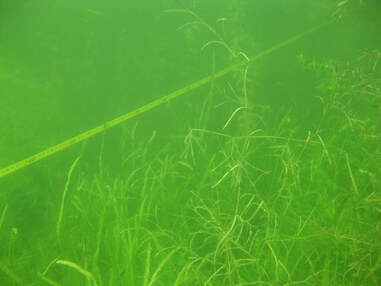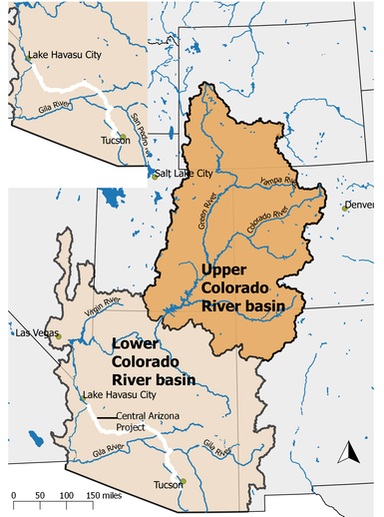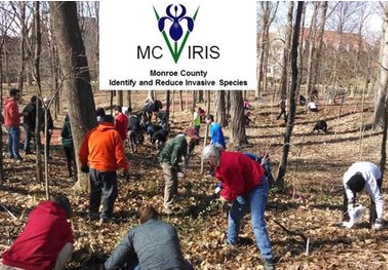The core themes of my research group concern:
- The drivers and structure of collective action under challenging environmental conditions (e.g., drought, invasive species)
- The design of multi-level collaborative water governance
- The role of norms and perceptions in societal transitions
- Integrating power analyses in transdisciplinary institutional research
A lot my early work was conducted in Nepal and China. I still have ongoing projects in these countries related to community forestry and rural agriculture, so feel free to contact me if you would like to discuss related projects.
Below are some current projects. I always have a handful of others I'm wrapping up or that are brand new, but I try to update this list a couple of times a year.

Social-ecological dimensions of climate change and aquatic invasive species in the midwestern US
Invasive species are a major driver of global change and how climate change is likely to influence invasions is poorly understood. Management of biological invasions is an equally complicated issue that requires that requires an understanding of ecological processes, community preferences, regulatory limitations, and economic constraints. This interdisciplinary project evaluates how Nitellopsis obtusa (starry stonewort), a key emerging aquatic invasive plant in the midwestern US, will respond to climate change. Incorporating both ecological and social factors, we illuminate optimal management approaches. We accomplish this by utilizing a latitudinal gradient in the range of starry stonewort, from Indiana to Minnesota, as a proxy for potential climate change.
On the ecological side of the project, we monitor replicated invasion locations to evaluate ecological processes. On the social science side, we conduct semi-structured interviews with stakeholders in the same locations to evaluate perceptions of starry stonewort impacts and management preferences. We will use the ecological data to develop simulation models of invasion spread patterns and impacts both within and between lakes. Social science data on stakeholder preferences will also be incorporated in the model. The model provides a mechanism to evaluate the efficacy of and tradeoffs between different management options at both lake and regional levels. Through our work with stakeholders, exciting new climate change adaptation efforts are developing and expanding into new projects.
Invasive species are a major driver of global change and how climate change is likely to influence invasions is poorly understood. Management of biological invasions is an equally complicated issue that requires that requires an understanding of ecological processes, community preferences, regulatory limitations, and economic constraints. This interdisciplinary project evaluates how Nitellopsis obtusa (starry stonewort), a key emerging aquatic invasive plant in the midwestern US, will respond to climate change. Incorporating both ecological and social factors, we illuminate optimal management approaches. We accomplish this by utilizing a latitudinal gradient in the range of starry stonewort, from Indiana to Minnesota, as a proxy for potential climate change.
On the ecological side of the project, we monitor replicated invasion locations to evaluate ecological processes. On the social science side, we conduct semi-structured interviews with stakeholders in the same locations to evaluate perceptions of starry stonewort impacts and management preferences. We will use the ecological data to develop simulation models of invasion spread patterns and impacts both within and between lakes. Social science data on stakeholder preferences will also be incorporated in the model. The model provides a mechanism to evaluate the efficacy of and tradeoffs between different management options at both lake and regional levels. Through our work with stakeholders, exciting new climate change adaptation efforts are developing and expanding into new projects.

Collaborative governance of the Colorado River Basin
I have a variety of ongoing projects in this space, including analyzing the process and outcomes of the lower basin Drought Contingency Plan (see my publications for related CRB research) and a new project centered on power dynamics in the CRB and other western US rivers.
I have a variety of ongoing projects in this space, including analyzing the process and outcomes of the lower basin Drought Contingency Plan (see my publications for related CRB research) and a new project centered on power dynamics in the CRB and other western US rivers.

Transformational solutions to climate change: Support for degrowth?
The current rate of economic growth, especially in industrialized nations like the United States, has well-known social and environmental consequences. There are a variety of potential alternative economic structures that could address these consequences, including reducing economic growth (i.e., degrowth) and technological solutions. Many of the changes necessary to address the social and environmental consequences of economic growth would involve dramatic changes to the status quo, and would require changes to public policy at multiple scales (e.g., local, national, international). It is often assumed that there is limited public support for these radical, or transformational, changes to public policies related to the economy and the environment, but few studies systematically examine the public’s support for such changes.
This research reduces this gap via a multi-city social survey examining the following key questions: How does public support of policies addressing the consequences of economic growth vary across three politically-distinct Indiana metropolitan areas (Bloomington, Fort Wayne, and Kokomo)? What factors influence public support for such policies across the three areas, and what are the implications of those differences for economic and environmental policy?
The current rate of economic growth, especially in industrialized nations like the United States, has well-known social and environmental consequences. There are a variety of potential alternative economic structures that could address these consequences, including reducing economic growth (i.e., degrowth) and technological solutions. Many of the changes necessary to address the social and environmental consequences of economic growth would involve dramatic changes to the status quo, and would require changes to public policy at multiple scales (e.g., local, national, international). It is often assumed that there is limited public support for these radical, or transformational, changes to public policies related to the economy and the environment, but few studies systematically examine the public’s support for such changes.
This research reduces this gap via a multi-city social survey examining the following key questions: How does public support of policies addressing the consequences of economic growth vary across three politically-distinct Indiana metropolitan areas (Bloomington, Fort Wayne, and Kokomo)? What factors influence public support for such policies across the three areas, and what are the implications of those differences for economic and environmental policy?

Collective action design in cooperative invasive species management areas (CISMAs)
The economic, social, and biophysical impacts of invasive species on Indiana ecosystems are projected to increase with climate change. This research addresses the human dimensions of invasive species management with a focus on collective action, an understudied but critical area in invasive species management. Leveraging an existing Indiana network of cooperative invasive species management groups (known as CISMAs), we analyze how different collective action structures influence social and ecological outcomes of invasive species management with implications for improving management. A statewide social survey of CISMA stakeholders will be conducted to assess the fit between governance structures and social-ecological characteristics (i.e., social-ecological fit). To evaluate what leads to differing outcomes across the state, a subset of CISMAs representing different governance structures will subsequently be selected for a comparative case study, including interviews with stakeholders and participant observation of group activities.
A better understanding of the dimensions of collective efforts to manage invasive species, including when they succeed and why, will provide data to inform future efforts by citizen volunteers, state agencies, and non-profits to address new and existing biological invasions. Scientific analyses of collective management efforts will be communicated to CISMAs across Indiana, aiding these groups in improving their social-ecological fit and maximizing management success.
The economic, social, and biophysical impacts of invasive species on Indiana ecosystems are projected to increase with climate change. This research addresses the human dimensions of invasive species management with a focus on collective action, an understudied but critical area in invasive species management. Leveraging an existing Indiana network of cooperative invasive species management groups (known as CISMAs), we analyze how different collective action structures influence social and ecological outcomes of invasive species management with implications for improving management. A statewide social survey of CISMA stakeholders will be conducted to assess the fit between governance structures and social-ecological characteristics (i.e., social-ecological fit). To evaluate what leads to differing outcomes across the state, a subset of CISMAs representing different governance structures will subsequently be selected for a comparative case study, including interviews with stakeholders and participant observation of group activities.
A better understanding of the dimensions of collective efforts to manage invasive species, including when they succeed and why, will provide data to inform future efforts by citizen volunteers, state agencies, and non-profits to address new and existing biological invasions. Scientific analyses of collective management efforts will be communicated to CISMAs across Indiana, aiding these groups in improving their social-ecological fit and maximizing management success.
